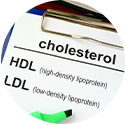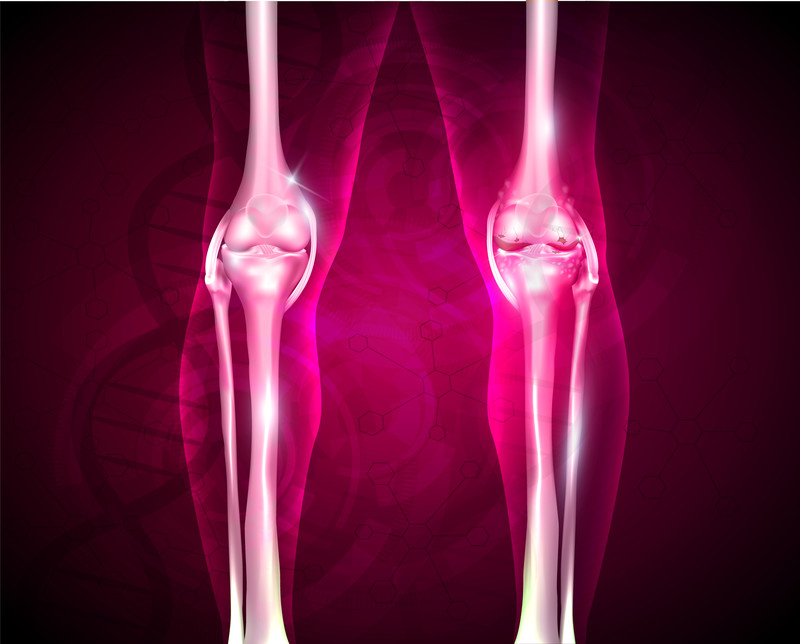Platelet-rich plasma or PRP therapy is an injection therapy that uses your own blood platelets to promote healing of musculoskeletal conditions. For many patients it can provide a long lasting healing. PRP may be a treatment that you have already been recommended to for your knee pain and you are searching the internet to learn more about it. In this article we will cover some of the PRP knee osteoarthritis study research from August 2019 to August 2021.
PRP, or Platelet-rich plasma, is derived from your own blood. It is a concentrated liquid injectable that consists of a combination of naturally occurring growth and healing factors, and, blood platelets. When the body suffers a soft-tissue injury, its natural response is to bring platelet cells to the area. Platelets, growth factors and healing cells initiate repair and attract the critical assistance of native cells (rebuilding cells) to the area of injury.
To create platelet-rich plasma therapy, a small sample of your blood is drawn, similar to a lab-test sample. The blood is placed in a centrifuge which separates the platelets from the other blood components. The concentrated platelet-rich plasma is then injected into and around the point of injury, jump-starting and significantly strengthening the body’s natural healing signal. Because the patient’s own blood is used, there is no risk of a transmissible infection and a very low risk of allergic reaction.
Does PRP work?
Researchers suggest that Platelet Rich Plasma Injections (PRP) are an effective treatment for patients with knee osteoarthritis. The treatments are considered safe, economical and more importantly provide good and long-lasting symptomatic relief to patients with knee pain.
Much of the research surrounding Platelet Rich Plasma Therapy treatments for knee osteoarthritis is considered preliminary or sometimes “controversial” because the treatment itself is considered somewhat controversial. The controversy, as we will see in the research below is not if the treatment works, but why it does not work and that research on treatment failure centers around the application of how the treatment is given.
We have seen PRP injections provide pain relief and improve function in many patients. We have many years of experience offering this treatment and have an understanding of who this treatment can help, who it may not help, and how much it can help. Let’s look at some research.
PRP or cortisone
A June 2021 study (1) compared intra-articular corticosteroid injections and PRP injections. Calling intra-articular corticosteroid injection “the mainstay of treatment for symptomatic management in knee osteoarthritis” the doctors suggested that platelet-rich plasma injections could be a promising alternative. So they investigated the effect of intra-articular PRP injections versus intra-articular corticosteroid injections for the symptomatic management of knee osteoarthritis.
Highlights of the paper:
The medical histories of 648 patients, of which 443 (68%) were female, average age 59 years old were examined.
Compared with corticosteroid injections, PRP was significantly better in reducing osteoarthritis symptoms (pain, stiffness, functionality) at three, six and nine months post-intervention. The greatest effect was observed at six and nine months.
At six months PRP allowed greater return to sporting activities than corticosteroid
Triple injections of PRP, generally separated by a week, were superior to single injections over 12 months follow-up.
Conclusions: Intra-articular-PRP injections produce superior outcomes when compared with corticosteroid injections for symptomatic management of knee osteoarthritis, including improved pain management, less joint stiffness and better participation in exercise/sporting activity at 12 months follow-up. Giving three Intra-articular-PRP, with injections separated by a week, appears more effective than 1 Intra-articular-PRP injection.
Comparing PRP injections to hyaluronic acid and corticosteroid in people not quiote ready for knee replacement
In this August 2021 study, (2) researchers compared PRP injections to hyaluronic acid and corticosteroid injections. In this study the researchers examined “younger patients and those without severe degenerative changes.” It is in this group of patients that the researchers noted: “the efficacy of intra-articular injections as a nonoperative modality for treating symptomatic knee osteoarthritis-related pain while maintaining function has become a subject of increasing interest.”
This paper was a systematic review which means that the study’s authors re-examined previously published research to make a combined assessment of those results.
Results: All intra-articular injections treatments except corticosteroid were found to result in a statistically significant improvement in outcomes when compared with placebo. PRP demonstrated a clinically meaningful difference in function-related improvement when compared with corticosteroid and placebo due to large effect sizes. . . With regard to improvements in pain, function, and both combined, PRP was found to possess the highest probability of efficacy.”
PRP can delay the need for knee replacement
In this July 2020 study published in the journal International orthopaedics,(3) doctors wrote that the biological action of platelet-rich plasma (PRP) could slow down the osteoarthritis progression, resulting in a delay of joint replacement. The study included 667 who met the inclusion criteria. 74.1% of the patients in the retrospective study achieved a delay in the total knee replacement of more than 1.5 years (on the low end), with a average delay of 5.3 years. The survival analysis showed that 85.7% of the patients did not undergo TKA during the five year follow-up. ”
“The results showed considerable improvement”
An August 2019 study (4) examined the outcomes of patients receiving PRP in “the treatment of knee joint cartilage injuries and degenerative meniscus lesions as well as pain relief.”
The researchers looked at 126 patients, 56 men, 70 women, who had 3 doses of PRP for 7 days as well as 3 and 6 months after the application of PRP. The results showed considerable improvement 3 months after the PRP application, and 6 months after the application the results remained approximately identical.
The researchers concluded: “The application of PRP in the field of medicine is widely applied, and it will continue to be because the understanding of PRP therapy is increasingly refined. This therapy represents a potential and latest method in short-term pain reduction, but additional studies are needed to prove its long-term effectiveness.”
A September 2019 study (5) investigated “the effects of intra-articular platelet-rich plasma (injections) on the femoral cartilage thickness, pain, functional status, and quality of life of patients with knee osteoarthritis.”
Here a total of 71 patients (109 knees – 38 of the patients had both knees treated) with knee osteoarthritis who were administered PRP injections twice with two-week intervals. Using various standard scoring systems, the patient’s response was measures for pain response, activity level, and quality of life scores were recorded at the baseline and 1-month, 3-month, and 6-month follow ups. The femoral cartilage thickness was measured via ultrasonography before treatment, and at 3-month and 6-month follow ups.
The resting and activity pain scores were significantly improved at 1-month, 3-month and 6-month follow ups when compared to the pre-injection values.
Significant reductions were found in the pain, stiffness, and function scores at 1, 3, and 6 months
Significant improvements were determined in the physical functioning, physical role, pain, general health, and emotional role sub-scores during the 6-month period.
CONCLUSIONS: “The results of (this) study indicated that the (PRP) injections improved the pain, stiffness, physical functioning, and quality of life of knee osteoarthritis patients; however, they did not seem to affect the cartilage thickness during the 6-month follow up period.
PRP protects against cartilage loss
A November 2019 (6) study examined the outcomes of PRP administration in the osteoarthritic knees of laboratory rats and concluded that PRP had induced an inhibitory effect on the apoptosis (death) of chondrocytes (cartilage cells), which, in turn, prevented the loss of cartilage height by inhibiting matrix loss.
A January 2020 (7) study found similar results in humans and took before an after MRIs to document these findings. In this study doctors examined patients with bilateral knees osteoarthritis-grade 1, 2, and 3 Each patient’s knees were randomly allocated to either control or treatment groups. PRP was injected in two sessions with 4 week intervals in PRP group.
46 knees (from 23 patients) were included in this study. 23 knees in the case group and 23 knees in control group were studied.
All patients were female with mean age of 58. An MRI was taken before treatment and an MRI was taken after treatment.
In the PRP group, all of the (MRI) radiologic variables (patellofemoral cartilage volume, synovitis and medial and lateral meniscal disintegrity), with the exception of subarticular bone marrow abnormality, had significant improvement. In a comparison between the two groups, patellofemoral cartilage volume and synovitis had significantly changed in the PRP group.
PRP treatment showed positive effects in patients with knee osteoarthritis in multi-studies
Here is a recent study (8) where the patients received two injections of PRP as the “complete treatment.” Even in this limited treatment positive results were recorded.
Researchers in Italy looked at active lifestyle patients with cartilage lesions and evaluated the effectiveness of PRP injections. Of the 50 patients studied, 25 had a previous surgery for cartilage repair. The other 25 had no surgical history.
Conclusions: “The PRP treatment showed positive effects in patients with knee osteoarthritis. Operated and nonoperated patients showed significant improvement by means of diminishing pain and improved symptoms and quality of life.
Clinical Relevance: There are only a few studies of PRP treatment for cartilage on osteoarthritic knees. Different PRP products might be more or less appropriate to treat different types of tissues and pathologies. The clinical efficacy of PRP remains under debate, and a standardized protocol has not yet been established.”
What some research suggests is that for the best chance for PRP to work for your knee pain, you need a doctor experienced in offering the treatment.
What all this research shows is that for the best chance for PRP to work for your knee pain, you need a doctor experienced in offering the treatment. PRP injection is not cortisone, it is a growth and repair mechanism and as such requires observation after treatment, adjustments after treatment, supportive treatments to treat the whole. A single injection of PRP will offer lead to non-conclusive results – people in pain need a “conclusion.”
The results of PRP injections can vary greatly. A key component of this is in the variability of how the treatment is offered and the experience of the doctor offering the treatment.
The importance of an experienced PRP physician, one with extensive clinical experience in treating patients with injection therapies, can make the difference between PRP treatments working or not working. Some believe PRP is a one time injection. This is not always the case.
At the Magaziner Center for Wellness We take a holistic view of the body, even from an orthopaedic standpoint. We believe it is crucial to obtain recovery from an injury or to cure chronic pain; PRP cannot be given just into that injured joint. We need to look at joints above and below the injury, and make sure they are stable. If these areas are left unstable, and not treated with PRP, then the original injury has a greater chance to recur.
We believe that PRP must correct both the injury and the mechanics of the body. For example, if you are suffering from knee pain, and only treat the knee, but fail to realize that the foot and ankle are unstable, then eventually the knee will become re-injured!
At the Magaziner Center for Wellness we use protocols established based on empirical observation and science combined with clinical experience with our patients.
How long does PRP take to work?
Initial improvement may be seen within a few weeks, depending on the injury or condition, gradually increasing as the healing progresses. Research studies and use in clinical practice have shown PRP therapy to be very effective at relieving pain and quickly returning patients to their normal routine. Both ultrasound and MRI images have shown definitive tissue repair after PRP therapy, confirming the healing process. The need for surgery can also be greatly reduced by treating injured tissues before the damage progresses and the condition becomes irreversible. The procedure takes approximately one hour, including preparation and recovery time. PRP therapy relieves pain without the risks involved with surgery, general anesthesia, or hospital stays, and does not require a prolonged recovery. In fact, most people return to their jobs or usual activities immediately afterwards.
How many treatments?
Above we offered some research suggesting multiple treatments. In a May 2021 study (9) doctors evaluated 260 knees in various stages of osteoarthritis (from grades 2 to 4) that were treated with PRP injections. The average age of participants in this study was 61 and 76.9% were women. About one in three of the patients were overweight.
In this study the researchers “demonstrated that intra-articular injection of PRP in osteoarthritis knees in grades II, III and IV are valuable, efficient and cost-effective. Patients observed a decrease in pain and an increase in degree of flexion. The changes were noticeable short term after three, six and nine months of follow-ups. Grade IV gave a good response to injection with improvement in pain and range of flexion, which as a result decreased the possibility of needing knee replacement or delayed it. Multiple injections gave better results than single injection in all grades regardless of their weight.”
If you would like to explore more information, please contact our office so we can start a conversation with you.
Related Articles
Hyaluronic Acid Viscosupplementation or Platelet Rich Plasma For Knee Pain Patients
Stem Cell Therapy for Bone on Bone Knees
Options For Partial Knee Replacement
Treatment of Meniscus Tears
References
1 McLarnon M, Heron N. Intra-articular platelet-rich plasma injections versus intra-articular corticosteroid injections for symptomatic management of knee osteoarthritis: systematic review and meta-analysis. BMC Musculoskelet Disord. 2021 Jun 16;22(1):550. doi: 10.1186/s12891-021-04308-3. PMID: 34134679.
2 Singh H, Knapik DM, Polce EM, Eikani CK, Bjornstad AH, Gursoy S, Perry AK, Westrick JC, Yanke AB, Verma NN, Cole BJ, Chahla JA. Relative Efficacy of Intra-articular Injections in the Treatment of Knee Osteoarthritis: A Systematic Review and Network Meta-analysis. Am J Sports Med. 2021 Aug 17:3635465211029659. doi: 10.1177/03635465211029659. Epub ahead of print. PMID: 34403285.
3 Sánchez M, Jorquera C, Sánchez P, Beitia M, García-Cano B, Guadilla J, Delgado D. Platelet-rich plasma injections delay the need for knee arthroplasty: a retrospective study and survival analysis. Int Orthop. 2020 Jul 3. doi: 10.1007/s00264-020-04669-9. Epub ahead of print. PMID: 32621139.
4 Mitev K, Longurov A. Intra-articular Platelet-Rich Plasma Injections for Treating Knee Pain Associated with Articular Cartilage and Degenerative Meniscal Lesions. Open Access Macedonian Journal of Medical Sciences. 2019 Aug 15;7(15):2484.
5 Şen Eİ, Yıldırım MA, Yeşilyurt T, Kesiktaş FN, Dıraçoğlu D. Effects of platelet-rich plasma on the clinical outcomes and cartilage thickness in patients with knee osteoarthritis. Journal of back and musculoskeletal rehabilitation. 2019 Sep 25(Preprint):1-9.
6 Asjid R, Faisal T, Qamar K, Khan SA, Khalil A, Zia MS. Platelet-rich Plasma-induced Inhibition of Chondrocyte Apoptosis Directly Affects Cartilage Thickness in Osteoarthritis. Cureus. 2019 Nov 1;11(11):e6050. doi: 10.7759/cureus.6050. PMID: 31827985; PMCID: PMC6890159.
7 Raeissadat SA, Ghorbani E, Sanei Taheri M, Soleimani R, Rayegani SM, Babaee M, Payami S. MRI Changes After Platelet Rich Plasma Injection in Knee Osteoarthritis (Randomized Clinical Trial). J Pain Res. 2020 Jan 10;13:65-73. doi: 10.2147/JPR.S204788. PMID: 32021396; PMCID: PMC6959502.
8 Gobbi A, Karnatzikos G, Mahajan V, Malchira S. Platelet-rich plasma treatment in symptomatic patients with knee osteoarthritis: preliminary results in a group of active patients. Sports Health. 2012 Mar;4(2):162-72.
9 Hegaze AH, Hamdi AS, Alqrache A, Hegazy M. Efficacy of Platelet-Rich Plasma on Pain and Function in the Treatment of Knee Osteoarthritis: A Prospective Cohort Study. Cureus. 2021 Mar;13(3).





































Recent Comments